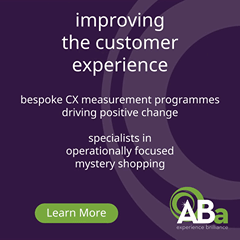How to use pricing fluency to tame marketplace volatility
Adopting the four pillars of pricing fluency enables retailers to control the worst effects of today’s supply chain disruptions and inflation pressures
By Evan Barlow, Regional Director for EMEA, for Revionics, an Aptos Company
Retailers have enough to worry about with an unpredictable supply chain and a global pandemic, so they don’t need inflation pressure adding to their list of challenges. However, the rising costs of materials, products and logistics are forcing retailers to take unprecedented steps to reduce slippage on margins while maintaining a positive perception with customers.
The good news is retailers have strong tools in their pricing department to manage this kind of volatility. For example, retailers can use price elasticity within stratified product assortments to protect margins. Sophisticated pricing tools can also help ensure retailers are being fair to consumers and not passing along price increases on every essential item.
The key to managing this challenge is to develop a ‘pricing-fluent organisation’ built on four strong pillars: 1. A comprehensive pricing plan, 2. Processes to execute the plan, 3. The right people to execute the processes, and 4. Advanced technology to amplify and disseminate decisions across the enterprise.
In an era marked by global unpredictability, there has never been a better time for retailers to leverage the power of pricing fluency to survive and thrive.
What Is Pricing Fluency?
Pricing fluency is similar to language fluency in that once it becomes ingrained, it is a natural way of operating. The important point is to expand the focus beyond the pricing team. Make pricing decisions front and centre throughout the organisation to achieve the best results.
To create an effective pricing plan, be sure to include the merchandising, marketing, supply chain, procurement, finance and operations teams. Without their support, the pricing team could have to fight an uphill battle.
Today we often hear retailers say, ‘Pricing is becoming increasingly important to us right now.’ Pricing is always important; however, the reason retailers are giving it greater weight is that pricing is an effective tool to use when fighting inflation and supply chain disruptions.
For example, pricing can control surging demand by pushing prices up and forcing demand to shrink. However, this knee-jerk reaction could cause catastrophic harm to the brand’s reputation and may be impossible to recover from.
Pricing can also be used to manage inflation by increasing prices to enforce margin goals. However, similar damage to the brand’s reputation and customer base would likely occur.
A more intelligent response is to create a comprehensive pricing fluency plan. Begin by asking key questions: What stimuli are triggering a pricing response? What are the key macroeconomic or global conditions? What is happening to local communities and specific shopper groups? How are manufacturers and suppliers adjusting costs? How are competitors reacting?
These and other factors must be included in pricing models designed to meet current challenges and maintain a strong foundation for sustainable success.
Converting Challenges into Opportunities
In challenging times, savvy retailers need to be aware that big opportunities can also arise. The last thing a retailer wants to do is go back to the dark ages of cost-plus pricing and pass increases to the consumer in an across-the-board approach.
A better method is to evaluate pricing by specific products and create price positions for each product. Determine which ones can absorb price increases, which ones carry brand significance, and which ones offer a competitive advantage.
During the evaluation, it is important to keep an eye on what competitors are doing. If they are making uniform price increases when costs rise at 8%, for example, then an opportunity exists to keep prices below this rate on strategic products.
A multifaceted approach may increase prices on products that are less important to consumers and keep prices low on high-value products.
Another opportunity has arisen as consumers have sharply increased their online shopping during the pandemic. In the omnichannel world, it is critical for retailers to adopt a stratified pricing strategy to achieve enterprise objectives.
For example, some retailers may choose to seize the moment and sacrifice margins in some categories to drive omnichannel sales and increase market share. For these retailers, it is important to look across their assortment to find the right categories and products to achieve these goals.
For other retailers, the right approach may be to strike a balance; for example, to achieve reasonable margin improvement (say 2% to 4%) in some areas, identify a few areas to drive share growth by reducing margins, and maintain current share in areas where there is no more room to grow.
Using Advanced Technology
The more complex a retailer’s pricing strategy is, the more difficult it is for the pricing team to execute. For example, a manager can focus on managing a hundred key-value items out of a thousand products in a category. However, due to bandwidth issues, the manager will inevitably lose track of products not identified as key-value items.
As it is often the long-tail, non-key-value items that offer some of the best margin potential opportunities for retailers, it is important that retailers are able to price these long-tail items in a way that maximises margin potential. In doing so, retailers can price more aggressively for their key items while achieving balanced results.
The solution is to use advanced technology that can manage thousands of products in an automated way to achieve optimal margins on a wide range of products while managers devote their full time to managing key-value items. This is a huge opportunity that many retail organisations have yet to take advantage of.
Using advanced pricing technology in this way is especially important today because the speed of change has sharply increased in the omnichannel world, which enables consumers to easily go online and compare prices.
Keeping up with a fast-paced pricing cycle is critical. Fortunately, advanced pricing technology is getting smarter through the adoption of machine learning and artificial intelligence (AI) capabilities, which operate faster and can manage more products than traditional pricing methods can.
Equally important is the ability to gather real-time pricing intelligence about competitors. Here again, automated tools are available that can bring this data to pricing teams. In a pricing-fluent organisation, tools like these have become essential.
Although today’s challenges may offer a rough ride in the near term, retailers can use advanced pricing strategies and technologies to smooth out the bumps and emerge stronger than ever.














